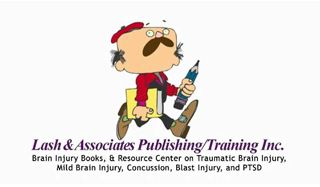In-School Strategies Can Help with Students with Memory after TBI

by Katherine Kimes, Ed.D.
Compensatory strategies help students with cognitive deficits
There are many cognitive deficit issues that can challenge the education of the child or adolescent after acquired brain injury. These implications include memory loss, organizational problems, conceptual skills, problem-solving, the inability to multi-task, trouble concentrating or paying attention in the classroom, and word finding. Typically, most students with brain injury have inconsistent patterns of academic performance and/or uneven cognitive deficits. In order to provide the most pro-active learning environment for these students, teachers need to learn how to implement strategies that will help the child or adolescent learn to compensate for these deficits and surpass expectations.
Match student’s learning style with cognitive strategies
It is important to structure lesson plans and instruction based around the three types of learning styles. These three learning styles include: 1) visual learners, 2) auditory learners and 3) tactile learners. Visual learners think in pictures and best learn from visual displays such as diagrams. Auditory learners learn best through verbal lectures, discussion and talking through things and ideas. Tactile learners are taught best through a hands-on approach. Now, based on these three learning styles it is important to develop strategies that can best address the multi-dimensional needs of a child or adolescent with brain injury so they can learn effectively.
Most teachers ask how they can help these students learn strategies to help with memory issues. Teachers seek to find the answer in techniques can that be used to teach students with TBI strategies to compensate for these deficits. These strategies are discussed below.
Strategies to help with memory problems
A good first question to ask – “Is there a breakdown in memory?” If so, where is that breakdown? In order to form a memory, sensory processing must first occur. Teachers can help these children process sensory information by using different classroom strategies. Sensory information is encoded into short-term memory with the goal of storing short-term memory/information into long-term memory.
Strategies that the teacher can utilize to help with the child with memory problems and comprehension can include:
- Using specific examples when talking about concepts and general ideas. This will help the child conceptualize and visualize theory into concrete examples.
- Breaking the big concept into smaller parts by rephrasing and simplifying.
- Presenting the lesson plan by using different scenarios/examples to get the main idea across.
- Using rhyming techniques of association so that the child can refer to these techniques to recall information.
- Clustering information together or group information into details and data.
- Using gestures to underscore an important concept/main idea.
- Using repetition throughout the lesson to underscore information to allow sensory processing to encode into short-term memory and store into long-term memory.
- Highlighting the importance of information through presenting questions throughout the lesson plan.
- Using the three learning styles/modalities when teaching a lesson. The teacher should verbally explain the lesson and use a visual example such as diagrams so the child can refer to the visual image of the concept/idea. Afterwards, the class should break down into groups or pairs and do hands-on work to illustrate practical use of the information.
- Teaching the child how to ask for clarification.
- Teaching the child to use mental imagery to visualize the situation, procedure or object for different classroom activities. This can be done through words, art and role playing.
- Having the child repeat/restate the information in his/her own words.
- Teaching the child how to repeat/rehearse important information using the technique of writing information down in list format and/or verbally repeating information.
- Demonstrating how to identify key points using who, what, where, when and why to assist in remembering the information.
- Making sure that testing conditions match learning conditions.
- Recommended Reading
Featured Authors and Organizations: Lash & Associates Publishing/Training Inc.
We thank Lash & Associates Publishing/Training, Inc. for allowing PediaStaff to reprint their article.
Lash & Associates Publishing/Training, Inc. publishes practical, informative, and affordable materials on acquired and traumatic brain injury in children, youths, adults and veterans. Their audience includes families, persons with brain injuries, health care professionals, rehabilitation specialists, educators and community staff.
Dr. Kimes is the President of ABI Education Services, LLC a consulting business that addresses the educational needs of children and adolescents with acquired brain injury
PediaStaff is Hiring!
All JobsPediaStaff hires pediatric and school-based professionals nationwide for contract assignments of 2 to 12 months. We also help clinics, hospitals, schools, and home health agencies to find and hire these professionals directly. We work with Speech-Language Pathologists, Occupational and Physical Therapists, School Psychologists, and others in pediatric therapy and education.
